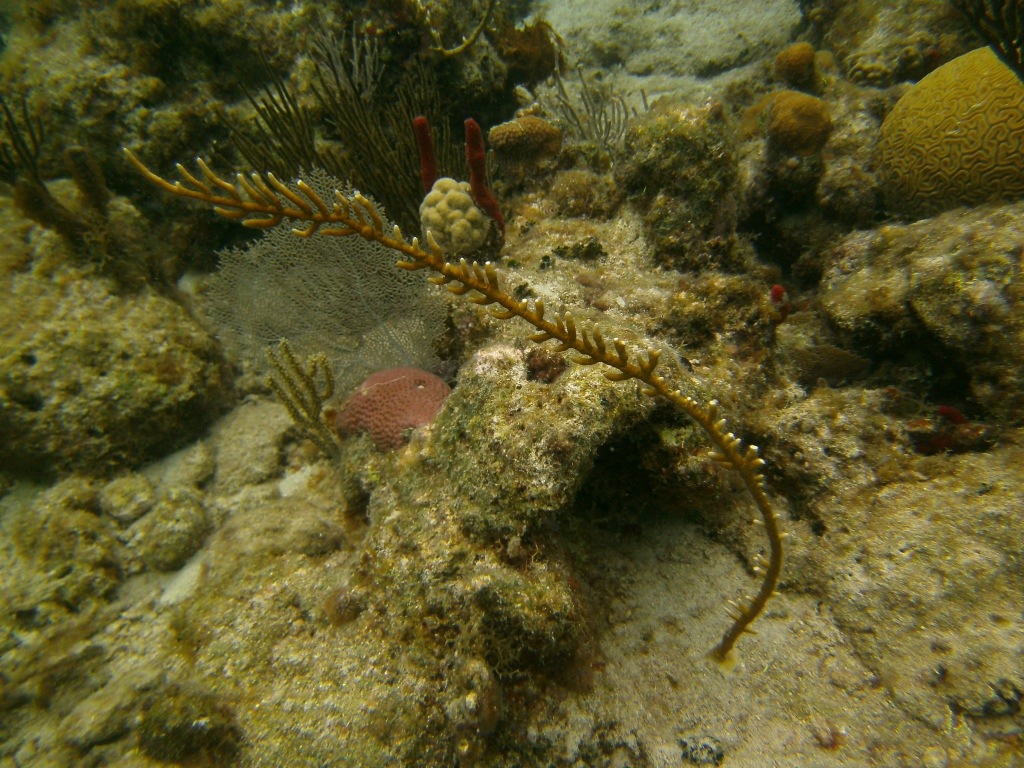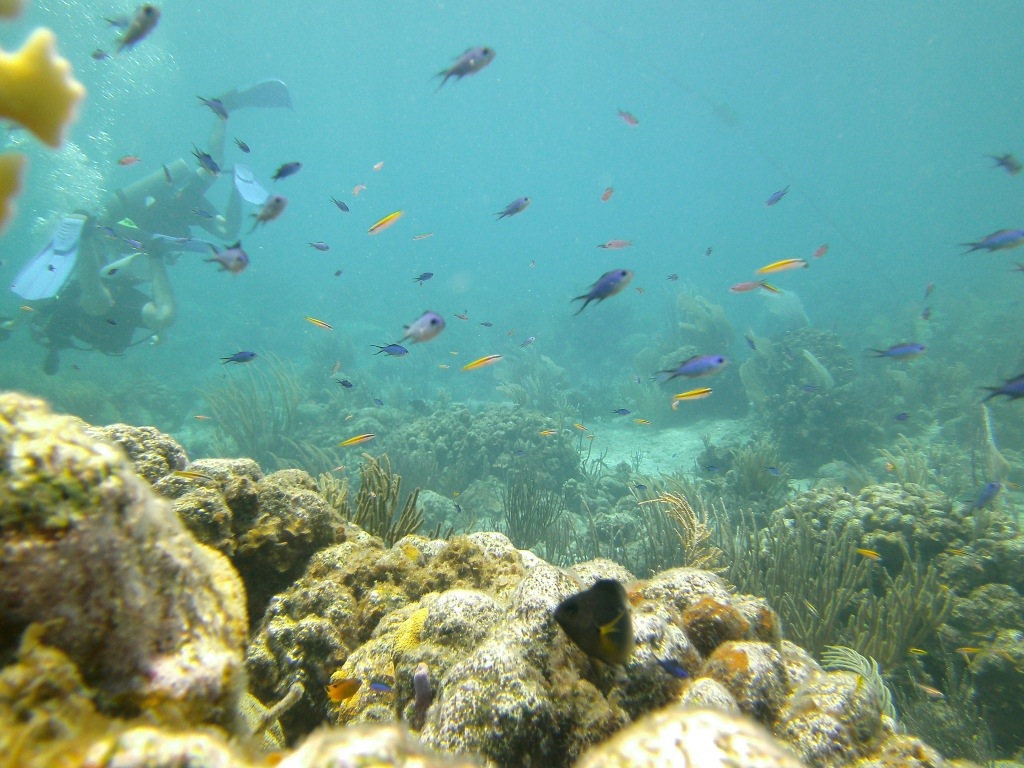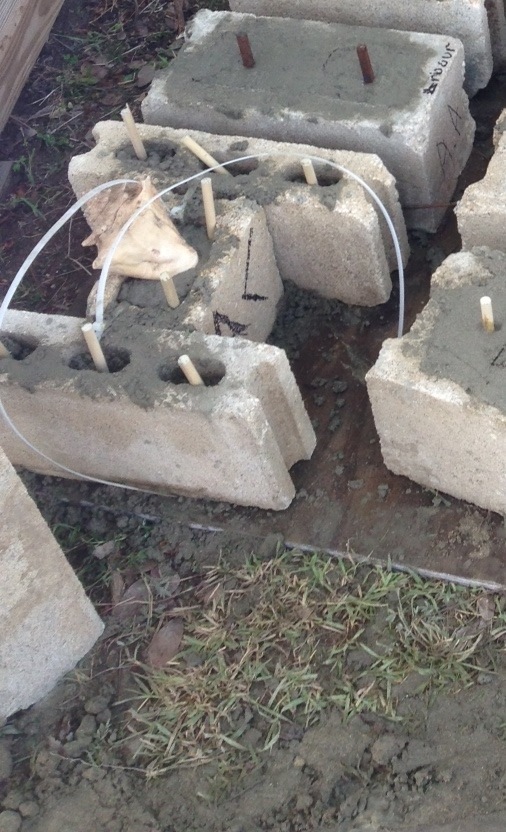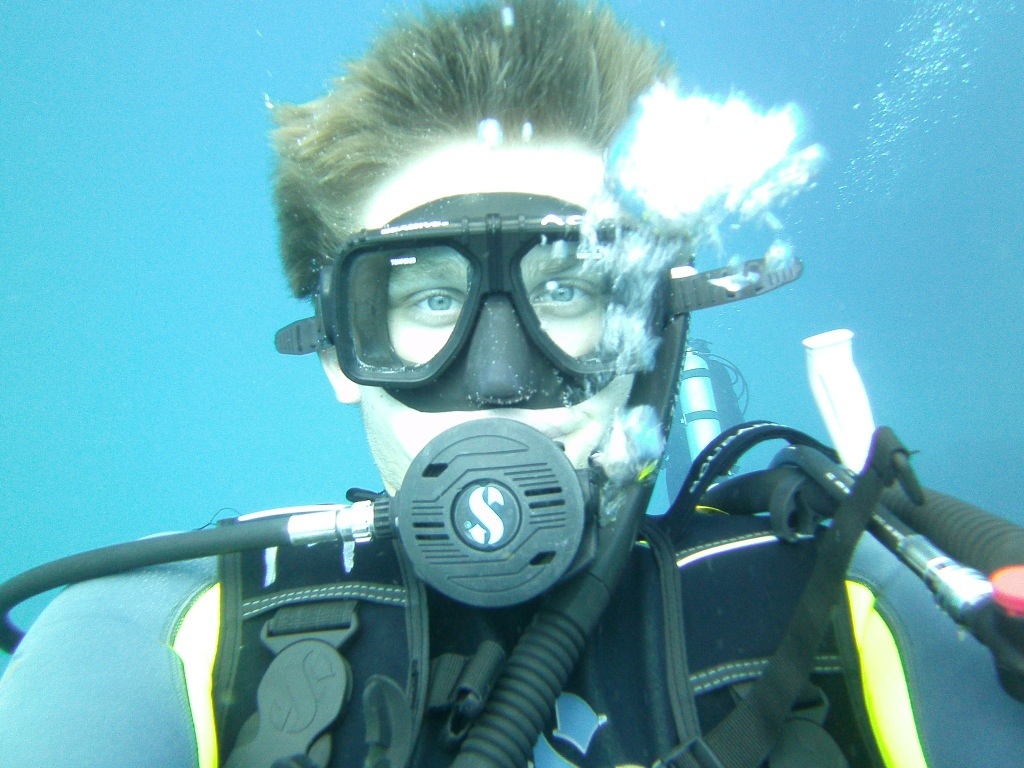This is fire coral.
You may not believe it, but there’s something amazing about fire coral. The BVI is fraught with it, and its difficult to find a location that doesn’t have it in abundance. Named for the fiery stinging feeling experienced when the stinging bristles come into contact with skin, fire coral is the bane of poorly buoyant divers everywhere. Today, as I measured the breadth of some brain coral, I had the pleasure of brushing up against some fire coral with my hand. I don’t use the word “pleasure” facetiously; What I mean to say is that the intense throbbing pain had its benefits. Now, I don’t mean that in a twisted, masochistic way; it definitely hurt and was unpleasant. However, in that moment of pain, I experienced a strange moment of clarity. Here, thousands of miles away from my home, twenty feet underwater, I interacted in the most intimate way with LIFE. I realized, as I rubbed sand violently against my hand, that I was literally surrounded by a bustling, teeming, thriving biosphere of LIFE. The fire coral’s defense against me is only just a part of that amazing network of life, and I got to be a part of that today.
Either that, or I’m just bad at multitasking.
Our day began with breakfast in the Dive BVI office at the marina, followed by an excursion out to Wreck Alley, the dive site adjacent to Cooper Island. Wreck Alley consists of four intentionally sunken ships, three of which I explored: the Biata, the Marie L., and the Pat. The ships were teeming with life, covered with coral, and a blast to explore. This was the first of two dives today; the second one had a mission. One method of assessing the health of a reef is to do a live coral coverage survey. This involves the deployment of a 20 yard weighted line underwater, and then the measurement of any live, dead, or bleached coral directly touching the line. The data collected from this can provide a snapshot of the general health of the reef. Measuring corals is what led to my heart-wrenching monologue that began this journal, even though emotions like that aren’t befitting a biologist. But I digress. The dive was both productive and enjoyable, and resulted in some radical photos.
Following our second dive, the Sea Dragon linked with the Sea Monkey in the harbor of Cooper Island’s Eco-resort, where we had the same delicious fish n’ chips we enjoyed on last year’s trip. After lunch, the Sea Dragon returned to the Virgin Gorda marina, but not before careening through some radical waves on the way back. Let it never be said that the rides between are boring, because they certainly aren’t.
The rest of the afternoon was spent in the heat creating the bases for the new coral to be added to the Jesuit reef. Using concrete and cinder blocks, each student was able to create a personal, mount on which coral will be planted tomorrow. I used half a block and two thinner, three-holed blocks to create a tie-fighter/ H shaped base.
Next time on Alex Curry’s Marine Biology Experience: Where will Alex drop his base? Was that pun intended? This and more!








